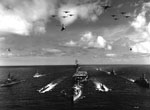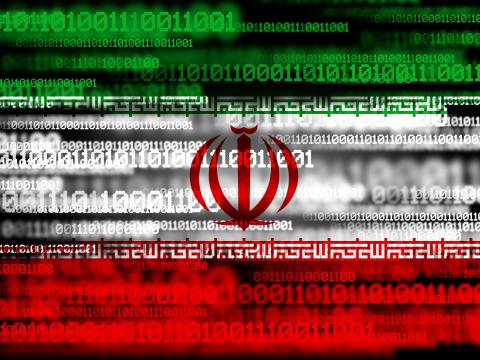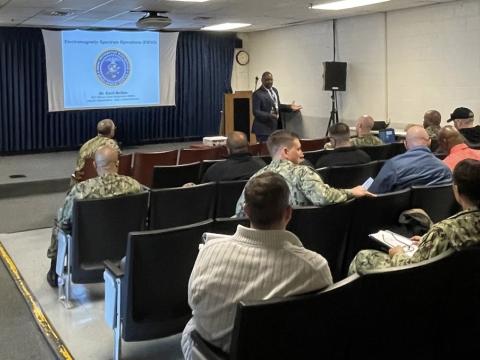Antisubmarine Warfare Concepts Offer Promise For Counterterrorism
 |
The USS Constellation is photographed through the periscope of a Soviet attack submarine in 1980. The Soviet navy conducted intelligence-gathering patrols near U.S. naval bases during the Cold War. |
Submarines, as targets, have much in common with current
Operational intelligence methods developed over nearly the last 100 years by navies—in particular, the U.S. Navy—to track and to target submarines may be equally applicable to the current fight against insurgents and terrorists in both the physical and information domains. Antisubmarine warfare (ASW) intelligence has both a definable methodology and mindset that is applicable to other types of warfare. This ASW intelligence analytical mentality, applied to irregular warfare (IW), can enhance the effectiveness of
The parallels between hunting submarines and tracking insurgents or terrorists are proven. Both target sets are stealthy and mobile, and they often choose the times and places of their attacks. There are also great similarities in the models and methods developed to combat them. The all-source “deep penetration” of submarine safe havens—enabling analysis to be used as a weapon—is one such key concept that must be expanded to IW.
Denying insurgents/terrorists stealth and operational freedom in their bastions through signature analysis is another concept. Current IW analysts and targeters should learn from the patience and negative search techniques developed by their ASW counterparts while operators develop speed of prosecution.
Both the Joint Publication The Petraeus Doctrine: The Field Manual on Counterinsurgency Operations (JP 3-24) and the U.S. Army/Marine Corps Counterinsurgency Field Manual (FM 3-24) validate the analogy between insurgents or terrorists and submarines. Additionally, Maj. Gen. Michael T. Flynn,
Submarines also represent a low-contrast foe capable of blending into their maritime operating environment, using mobility and stealth to avoid and attack opponents. Both Cold War-era and current nuclear and air-independent propulsion submarines are extremely quiet and highly mobile, and they possess the ability to remain hidden in the maritime environment for long periods of time. Today’s insurgents use the Internet and modern communications as a protected area to organize and operate. This operational pattern resembles the ballistic missile submarine (SSBN) bastions that the Soviet Navy constructed, using a combination of nuclear and diesel submarines, surface ships and aircraft to protect its at-sea nuclear deterrent force and provide its freedom of operation.
Another striking comparison between terrorists/insurgents and submarines is the manner in which both prefer to operate and attack. Gen. Flynn stated that “[Insurgents] remain low contrast until time to strike and then quickly blend back into the population.” Substituting “nuclear submarines” and “ocean background” for “insurgents” and “population” in his statement also rings true. Both insurgents and nuclear submarines, because of their stealth and mobility, can choose the time and place of their attacks, which vastly improves both attackers’ prospects for success.
 |
A 1959 U.S. Navy coordinated ASW task group melded intelligence, sensors and weapons in a configuration that balanced patience with speed—the same attributes required of an IW strategy. |
A relationship that cements the validity of the analogy can be found in the methods developed to counter them. During the Cold War, a five-phase doctrinal model—detection, classification, localization, tracking and kill—was developed to capture the ASW process. Current personality targeting models employed in
With these comparisons in mind, operational intelligence methods developed to counter the submarine threat over the last century—and particularly during the Cold War—logically are adaptable to IW. An important starting point is to identify several significant characteristics that make the ASW intelligence methodology effective and useful for IW.
First and foremost, ASW operational intelligence relies on an analytical mindset enabled by all-source intelligence fusion. In a way similar to current counterinsurgency and counterterrorist operations in
The second similarity is the so-called deep penetration of the adversary both geographically and mentally. During the Cold War, this penetration was accomplished by a repetitive and coordinated employment of all-source surveillance and reconnaissance capabilities and platforms at every level—from national to tactical—to produce intelligence usable against Soviet submarines. Beginning in the mid-1970s, the Soviet Union’s home waters became a major focus of
These efforts were valuable because they provided analytical insight and intelligence not only into Soviet and U.S. Navy submarine operational practices but also into the thought processes behind the practices. The same kind of penetration into an insurgent adversary is critical for effective localization and targeting. For example, ongoing efforts to penetrate deeply into the electronic bastions, such as the Internet and communications networks through which insurgents operate, should be expanded just as they were against Soviet SSBN bastions.
A third trait of ASW intelligence is patience—specifically, patience in target development combined with speed of prosecution. A few Navy pundits humorously comment that ASW really stands for “awfully slow warfare.” However, in ASW patience is required to detect, classify and localize a submerged target. Once a submarine is localized, ships and aircraft equipped with weapons and sensors and enabled by national intelligence require the speed to close with the target to track/exploit it in peacetime or kill it in wartime.
To achieve this balance of patience and speed, naval forces have maintained an integrated approach to ASW operations and intelligence. Just as in ASW intelligence, patience is a key factor in IW, whether in the form of long-term strategic commitment of the nation’s intelligence resources or, operationally, in allowing a target to ripen for intelligence gain. IW demands an ASW-type coordinated approach combining intelligence, sensors and weapons that balances patience with speed.
A fourth aspect of the ASW intelligence methodology responds directly to criticism about the differences in distinguishing a submarine—as opposed to a person—from its background. This aspect is the continuing effort to identify those characteristics that permit the distinction. Throughout the Cold War, scientific and technical intelligence organizations strove to differentiate Soviet submarines from the ocean. Initially these efforts focused on acoustics, but they encompassed other areas as submarine quieting improved over time. Adm. David Jeremiah, USN (Ret.), former commander of the U.S. Pacific Fleet, commented in a 2000 video interview that his intelligence officer “had unique stuff he could use to identify by hull number the identity of Soviet subs … .”
Applying this identification concept to IW would entail finding some cultural or other signature that is exploitable and makes the insurgent stand out against his or her background. Many IW experts compare the development of such signatures to law enforcement intelligence collection conducted against criminal gangs. Phrases such as “profiling,” “extensive data files,” “law enforcement stakeout” and “the beat cop who has worked the neighborhood for years” commonly are used in such comparisons. The Cold War ASW intelligence mentality, in which sensors and platforms literally spent years dwelling—or “staking out”—the geographical operating areas of Soviet submarines and compiling extensive amounts of data for analysis, works well with, and should be applied to, IW. This is perhaps the hardest challenge in current intelligence because the insurgent signature is likely to be cultural and not technological. Nevertheless, it is one that must be pursued and overcome.
The final element of the ASW mindset is what might be termed “looking for holes in the ocean.” U.S. Navy ASW operational intelligence personnel develop a talent and knack for finding things that specialize in hiding. The primary approach used is the employment of what Dr. Owen Cote, the associate director of the Massachusetts Institute of Technology’s Security Studies Program, has called “negative search information.” Negative search methodologies offer promise in IW because they permit a concentration of reconnaissance capabilities in high-probability areas.
A relatively recent, and relevant, example of ASW negative search methodologies conducted against a low-contrast enemy was the Scud missile hunt in
The backbone of the ASW negative search mindset is, of course, people and the human thought process. Naval intelligence personnel continue to develop the skills and background to conduct such negative searches and can continue to contribute to primarily land-based IW efforts.
Cmdr. David M. Houff, USN, is a former professor of joint military operations at the




Comments